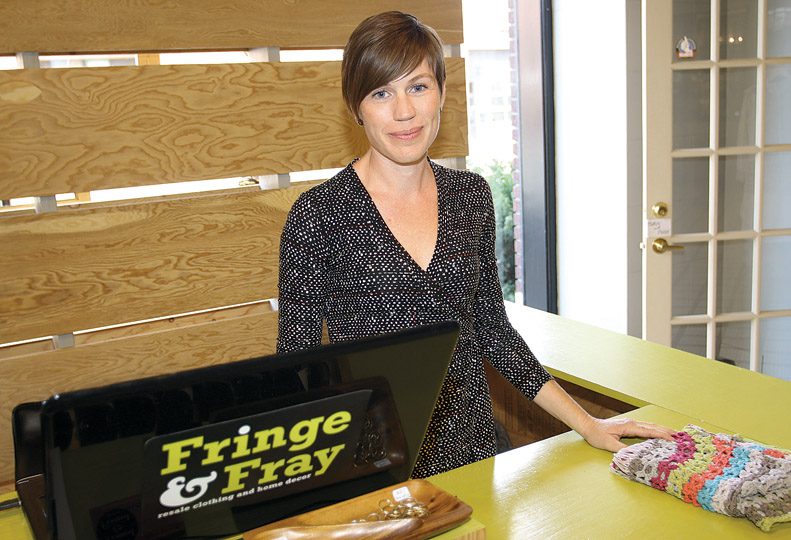
Home » Retail sales rise throughout Spokane County
Retail sales rise throughout Spokane County
5 percent increase seen over first half of the year

September 10, 2015
Taxable retail sales throughout Spokane County increased 5 percent through the first half of this year, compared with the year-earlier period, county budget and finance office statistics show.
Through the first six months of 2015, Spokane County had just over $2 billion in retail sales, up from $1.9 billion in the first half of last year, the statistics show.
Retailers here who were interviewed say the figures are somewhat reflective of what their businesses have experienced in the past year.
“I would say business was up in the first half of this year compared to last, but by a very small percentage,” says Grace Johnson, who co-owns the Fringe and Fray clothing store at 1325 W. First downtown with her husband, Ryan Johnson.
“We’ve seen an improvement in the economy, but every business owner always hopes for more,” adds Johnson, whose west downtown Spokane store has been in business for nearly six years.
Taxable sales figures show that from January through June of this year, each month outperformed the coinciding month of 2014. Taxable retail sales in the county in January outperformed the same month in 2014, $343 million compared with $328 million; in February, $436 million compared with $405 million; and in March, $287 million compared with $268 million. Similarly, taxable sales were up in April, $331 million from $280 million in the year-earlier month; in May, $356 million from $334 million; and in June, $336 million from $321 million.
In the first quarter, taxable retail sales this year exceeded the same period last year by 7 percent, $1.07 billion to $1 billion, statistics show.
The figures don’t provide a breakdown of tax proceeds collected by each city within the county, says Margaret Smith, a senior management and budget analyst with the county. Washington state Department of Revenue spokeswoman Kim Schmanke says that department expects to have those figures compiled later this month.
Reema Shaver, owner of Bistango Martini Lounge at 106 N. Post downtown, says her business is up “substantially” in the first half of 2015 compared with last year. While she declines to discuss exact numbers, Shaver did say Bistango is off to one of its strongest years in its almost 10-year history.
“Business is very good right now,” she says.
Meanwhile, Boo Radley’s store manager Jen Menzer says the first half of 2015 has been a “great time” for the store, located at 232 N. Howard.
“The opening of the Grand Hotel has been huge. Between WorldCon (the big science fiction convention held here last month) and Atticus (Coffee & Gifts) next door, we have had a strong year,” says Menz.
“The Grand wasn’t even open for all of June, but we have really felt the effects of more people being on the street in our area,” she says.
Kyle Kemble, store manager at Uncle’s Games Puzzles & More at 404 W. Main, also cited the Davenport Grand Hotel’s opening for contributing to a strong second quarter this year. Kemble wouldn’t reveal store revenues, but he said 2015 has shaped up to be a better year than 2014.
“There are always lots of intangibles that quite honestly are just always very hard to pinpoint exactly why,” Kemble says. “The Grand? Absolutely it’s been a help. Ultimately you’re always looking to grow and see your customer base expand.”
The Washington state Department of Revenue reported last month that the state’s taxable retail sales totals grew to $29.7 billion in the first quarter of 2015, recording a 9 percent increase over the same period in 2014. Retail trade, a subset of total taxable retail sales, rose 7.5 percent to $13.3 billion.
King, Pierce, Snohomish, Spokane, and Clark counties had taxable retail sales percentage increases of 10.5 percent, 7.1 percent, 7.3 percent, 6.8 percent, and 13.8 percent figures for the quarter. King had taxable retail sales of $12.09 billion; Pierce, $3.1 billion; Snohomish, $2.77 billion; Spokane, $1.86 billion, and Clark, $1.32 billion respectively, the WSDA report says.
The DOR is the state’s primary tax administration agency. In fiscal year 2014, it says it collected more than $19.6 billion in tax revenues that support public schools, social services, health care, corrections, public safety, and natural resources conservation.
Latest News Retail
Related Articles




